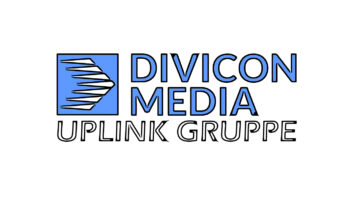After a delay of more than a year, the Department of Justice announced on March 25, 2008 it would not block the proposed merger of XM and Sirius.
Although that is not the final step in the process, as the FCC must still give its blessing to the deal as this issue of Radio World goes to press, it served to remove a major stumbling block in the way of its progress. It also represented good news for the satellite industry as a whole on multiple fronts.
First and foremost, a black cloud of uncertainty hanging over the satellite industry since the proposed merger was first announced has begun to dissipate. A number of contemplated transactions that had been on hold awaiting the final word on the deal can now move forward.
Second, the approach taken and the final outcome reached by the Department of Justice represent major positive milestones for the industry.
Analyze this
While the immediate reaction to the department’s decision has, in some quarters, been one of scorn and derision, the actual analysis conducted is quite sophisticated and perceptive, albeit somewhat unconventional, in terms of traditional duopoly combination situations.
Rather than attempting to number-crunch market share figures or quantifying concentration levels, the department eschewed these techniques in favor of an analysis of the actual behavior patterns of XM and Sirius and their customers in the telecom marketplace today, and what impact, if any, the combination would have on the future marketplace behavior of the various participants and affected parties.
And while it may seem counterintuitive at first glance that the merger of the only two U.S. satellite radio operators would not diminish customer choice and potentially lead to price increases, in fact — as the department properly concluded — the likelihood of such outcomes occurring was overblown and did not rise to the level where government intervention to block the merger would have been appropriate.
As the department correctly observed, there was very little competition between the two companies to date in terms of price or customer choice. The largest percentage of their business was generated as a result of customized satellite radio equipment installed in vehicles, so the determination of which satellite radio provider a particular customer would select was dictated by vehicle purchase.
Nor would anyone credibly suggest that a car purchaser decides which car to buy based on which satellite company’s receiver comes installed in the vehicle. Also, a portion of the mass-market retail sales made by the two companies were to customers who already subscribed to one of the two companies and were buying a second or third receiver to complement their existing subscription.
Again, it would be hard to believe that potential price or content competition would have any bearing on this type of purchase decision.
The only place where price or content competition between XM and Sirius could have an impact was in that portion of mass-market retail sales for stand-alone equipment for new subscribers, where the department correctly took note of the robust competition already present between satellite radio providers and over-the-air AM/FM broadcast radio, HD Radio, Internet radio and devices such as MP3 players and cellphones.
It was quickly concluded that the merger of XM and Sirius would have a negligible effect, if any, on competition in this expanded market segment.
This analytical methodology was music to the ears of the satellite industry on two levels.
First, it signaled recognition by antitrust authorities of how competitive, dynamic and diverse the telecommunications content delivery marketplace in the United States (and, for that matter, globally) has become, which can be taken as a positive harbinger of their approach in the future to the telecom sector in general.
Second, it demonstrated a willingness in such circumstances to dispense with more conventional competitive impact approaches that fail to accurately capture actual marketplace behaviors.
The final benefit to the satellite industry came by eliminating (or at least downplaying) a specific regulatory concern that potentially faced other segments of the satellite industry, in particular the mobile satellite services segment. While today the MSS sector is in the process of experiencing a rebirth of sorts, there is a broad consensus that some rational industry consolidation is required to avoid the potential for costly, and possibly fatal, over-investment.
However, one of the uncertainties associated with such potential consolidation has been whether the FCC or the antitrust authorities might have special concerns with regard to mergers between two companies operating in the same frequency band (i.e., L-Band, such as Inmarsat and MSV; or S-Band, such as Terrestar or ICO), particularly where doing so might consolidate the allocated spectrum in that band in the hands of a single operator.
And while it could be a mistake to read the outcome of the XM/Sirius merger too broadly on this issue, a decision by the department to oppose the merger could have had a chilling effect on consideration of other possible consolidations involving companies that share the same frequency band allocation in a manner similar to XM and Sirius.











